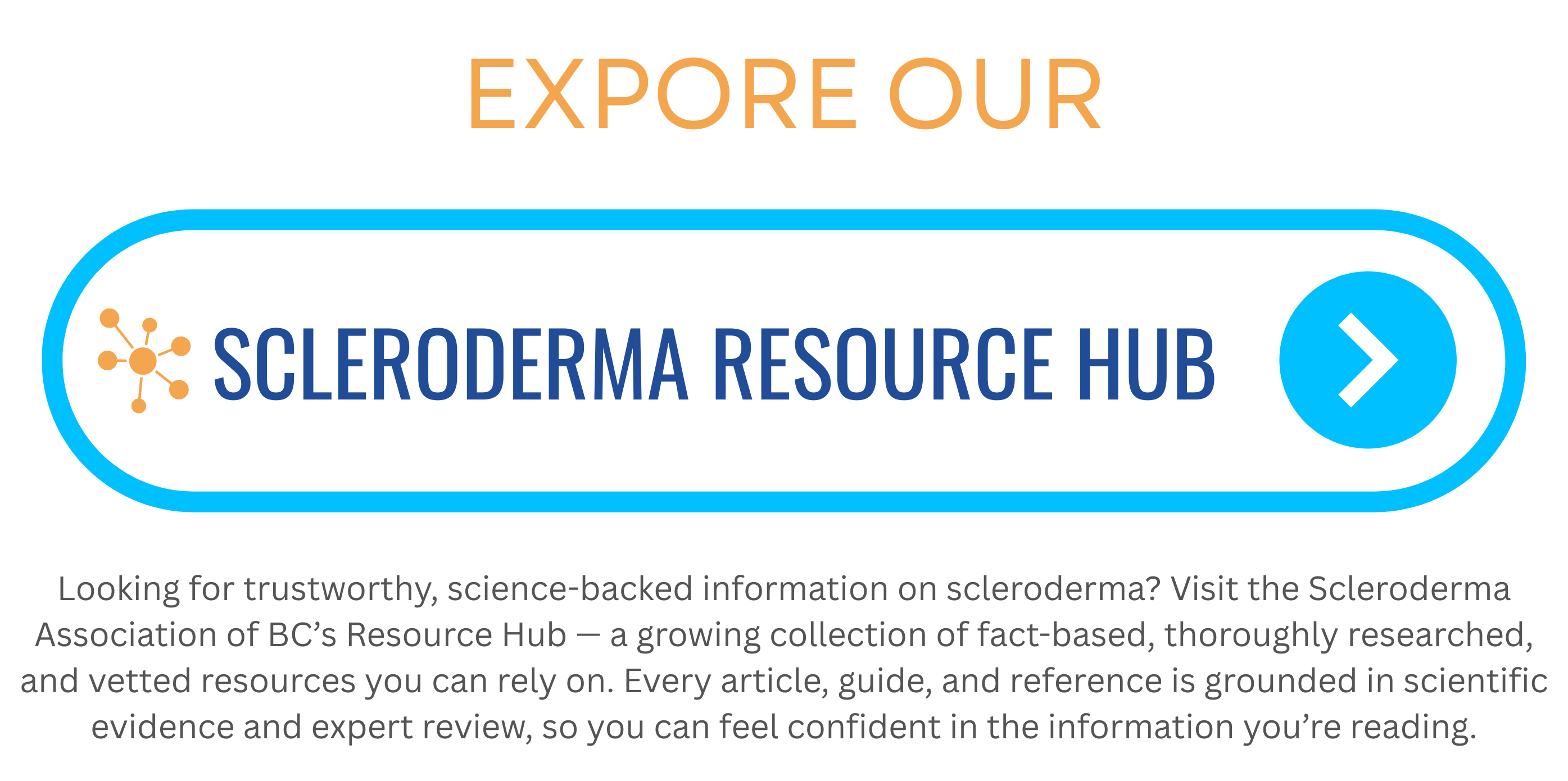The Different Forms of Scleroderma
There are two major classifications of scleroderma: localized scleroderma and systemic sclerosis (Ssc). Both of these forms can be further classified into sub-categories as described below.
Localized Scleroderma
The changes, which occur in localized scleroderma, are usually found in only a few places on the skin or muscles, and rarely spread elsewhere. Generally, localized scleroderma is relatively mild. The internal organs are usually not affected, and persons with localized scleroderma rarely develop systemic scleroderma. Some laboratory abnormalities commonly seen in systemic scleroderma are frequently absent in the localized form.
Morphea is a form of localized scleroderma characterized by waxy patches on the skin of varying sizes, shapes and color. The skin under the patches may thicken. The patches may enlarge or shrink, and often may disappear spontaneously. Morphea usually appears between the ages of 20 and 50, but is often seen in young children.
Linear scleroderma is a form of localized scleroderma which frequently starts as a streak or line of hardened, waxy skin on an arm or leg or on the forehead. Sometimes it forms a long crease on the head or neck, referred to as en coup de sabre because it resembles a saber or sword wound. Linear scleroderma tends to involve deeper layers of the skin as well as the surface layers, and sometimes affects the motion of the joints, which lie underneath. Linear scleroderma usually develops in childhood. In children, the growth of involved limbs may be affected.
There are two major types of Systemic Sclerosis:
1. Limited Scleroderma
It is also known as CREST syndrome:
| C | Calcinosis |
| Tiny calcium deposits (calcinosis) to develop under your skin, mainly on your elbows, knees and fingers. You can see and feel these deposits, which sometimes are tender or become infected |
|
| R | Raynaud’s phenomena (finger discoloration upon exposure to cold) |
| This condition occurs when small blood vessels in your fingers and toes spasm in response to cold or emotional stress, blocking the flow of blood. In most people, the skin turns white before becoming blue, cold and numb. When circulation improves, the skin usually reddens and might throb or tingle. Raynaud’s phenomena is often the first sign of limited scleroderma, but many people who have Raynaud’s never develop scleroderma. |
|
| E | Esophageal dysmotility (disorder affecting 2/3 of the lower esophagus) |
| Poor functioning of the muscles in the upper and lower esophagus can make swallowing difficult and allow stomach acids to back up into the esophagus, leading to heartburn, inflammation and scarring of esophageal tissues. | |
| S |
Sclerodactyly (thick, tight skin of the fingers; – pudgy fingers) |
| Skin changes typically affect only the lower arms and legs, including fingers and toes, and sometimes the face and neck. It may become difficult to bend your fingers or to open your mouth. | |
| T | Telangiectasia (tiny dilated blood vessels visible on the face and hands) |
| Telangiectasia is seen when small blood vessels swell near the skin surface and form small red spots. The spots are not painful. |
2. Diffuse Scleroderma
Diffuse scleroderma is a more severe type of scleroderma. There is usually more skin thickening, and more skin is involved. It also often involves internal organs. The skin, digestive system, heart, lungs and kidneys are the most commonly affected organs. It can also affect blood vessels, muscles and joints. The tissues of involved organs become hard and fibrous, causing them to function less efficiently. There is also a lot of variability in which organs are affected from person to person.
With both limited and diffused scleroderma, not only does it involve the body and internal organs, but also greatly reduces the quality of life of patients, who often experience pain, fatigue and shortness of breath in their everyday activities.






